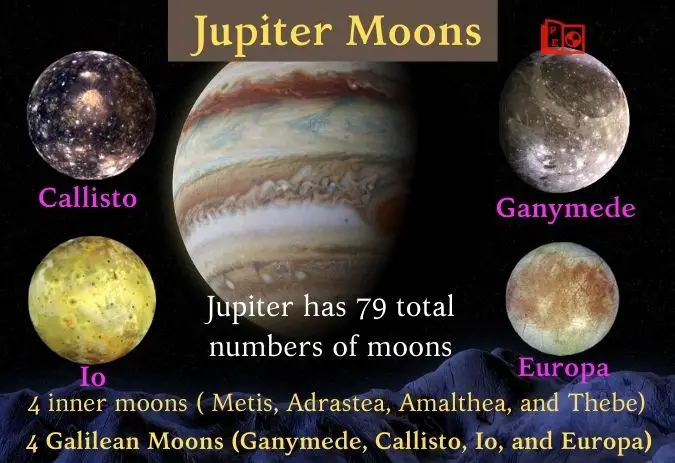Jupiter has 79 moons 26 are still waiting to be officially named

Jupiter’s 79 Moons: 26 Still Awaiting Official Names

Jupiter, the largest planet in our solar system, is not only famous for its massive size, breathtaking storms, and iconic Great Red Spot but also for its impressive collection of moons. With a staggering total of 79 moons, Jupiter boasts the largest moon system of any planet in our cosmic neighborhood. These celestial bodies, also known as Jovian moons or satellites, offer a fascinating glimpse into the diverse and complex nature of our planetary system.
Among the 79 moons orbiting Jupiter, only 53 have been officially named so far. This indicates that a significant number of these mysterious moons are still waiting for their moment of recognition. To be precise, 26 of Jupiter’s moons are patiently awaiting official names from the International Astronomical Union (IAU). While some of these yet-to-be-named moons were discovered decades ago, others have been more recent discoveries, offering scientists new opportunities for exploration and discovery.
One of the key reasons behind the delay in naming these 26 moons is the complex process involved. According to the IAU’s rules, once a moon’s discovery is confirmed, it is given a preliminary designation consisting of the year of discovery and a letter. For example, the recently discovered moons are currently known as “Jupiter LXXIV” and “Jupiter LXXV.” These provisional designations play a crucial role in accurately cataloging and identifying these celestial bodies before they are officially named.
The process of naming a moon primarily involves proposing names related to Jupiter’s mythology, specifically the Roman god Jupiter (equivalent to Zeus in Greek mythology) or Zeus’s descendants. Additionally, names that reflect the cultural and historical diversity of human civilization are also considered. The proposed names undergo careful evaluation by the IAU, ensuring that they meet the established criteria and are not duplicate or inappropriate. Ultimately, the final decision rests with the IAU’s Working Group for Planetary System Nomenclature.

While the process of naming these moons may take time, it provides an excellent opportunity for scientists and researchers to study and understand the fascinating dynamics of these celestial objects. Each moon has unique characteristics, such as size, shape, and orbital patterns, that remain under close scrutiny by astronomers. The data obtained through observations and space missions, like NASA’s Juno mission, contributes to enriching our knowledge of these celestial bodies and their role in the intricate dance of our solar system.
Jupiter’s moon system is incredibly diverse and includes several notable members. For instance, Ganymede, with a diameter of 5,268 kilometers, is the largest moon not only in Jupiter’s system but in the entire solar system. It is larger than the planet Mercury and even rivals Mars in size. Another noteworthy moon, Europa, has attracted considerable attention due to its subsurface ocean, making it a prime target in the search for extraterrestrial life. Other fascinating moons include volcanic Io, cratered Callisto, and irregularly shaped Amalthea, among many others, each presenting its own mysteries waiting to be unraveled.
As we await the official names of these 26 moons, the world of astronomy continues to delve into the wonders of Jupiter’s expansive moon system. With ongoing technological advancements and future space missions, we can expect further discoveries, unveiling more secrets hidden within this awe-inspiring planetary system. The significance of these moons in shaping our understanding of the universe and our place in it cannot be overstated.
Source: NASA’s Solar System Exploration: Jupiter Moons Overview
Related Posts
Quick Links
Legal Stuff

